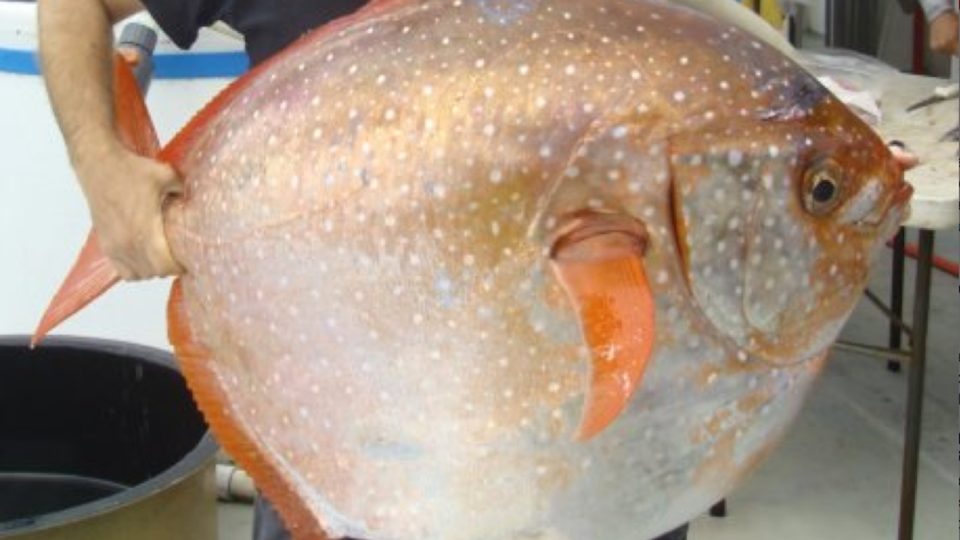Science News
A Warm-Blooded Fish

Warm-bloodedness, or endothermy, has its benefits. It “increases reaction rates, muscle power output, and the capacity for sustained aerobic performance,” according to a new paper in Science. Sounds great for us mammals and birds, right? It now also holds true for a species deepwater fish, the opah (Lampris guttatus).
The opah is known to inhabit depths of 45 to 400 meters (150 to 1,300 feet), where it’s cold and dark. Scientists figured these creatures were slow-moving, like other deepwater animals, because internal organs, including hearts, cool off quickly and begin to slow down in the cold depths. But opah get around pretty quickly!
Their fast-moving lifestyle suggests something’s different about this species. Most fish (and reptiles) are cold-blooded, or ectotherms, meaning they rely on external sources to warm their bodies. Some fast fish, such as sharks, tunas, and sailfish, are able to warm certain parts of their bodies (especially their muscles) to boost their swimming performance, but these species must return to shallower depths to rewarm themselves. Scientists now understand that this doesn’t hold true for the opah.
Researchers collected temperature data from opah caught in the eastern Pacific Ocean, measuring body temperatures consistently warmer than the surrounding water. Temperature monitors attached to opah revealed body temperatures that remained steady as the water temperature dropped sharply, even on dives to 300 meters (nearly a thousand feet). The fish maintained an average muscle temperature about 5°C (40°F) above the surrounding water.
Biologist Nicholas Wegner of NOAA’s Southwest Fisheries Science Center discovered that it all has to do with the fish’s gills. Warm blood leaving the body core helps heat up cold blood returning from the respiratory surface of the gills where it absorbs oxygen. Resembling a car radiator, it’s a natural adaptation that conserves heat. The unique location of the heat exchange within the gills allows nearly the fish’s entire body to maintain an elevated temperature.
“There has never been anything like this seen in a fish’s gills before,” Wegner says. “This is a cool innovation by these animals that gives them a competitive edge… Because it can warm its body, it turns out to be a very active predator that chases down agile prey like squid and can migrate long distances.
“Nature has a way of surprising us with clever strategies where you least expect them," he continues. “It’s hard to stay warm when you’re surrounded by cold water, but the opah has figured it out.”
Image: NOAA Fisheries/Southwest Fisheries Science Center